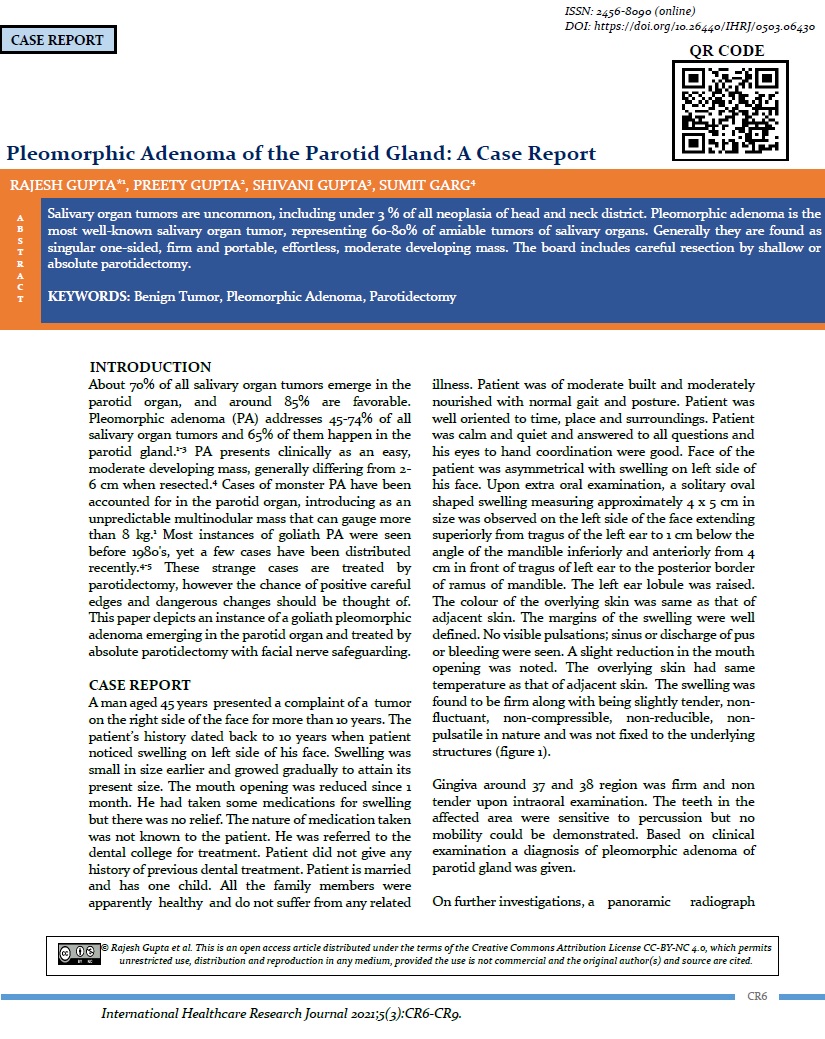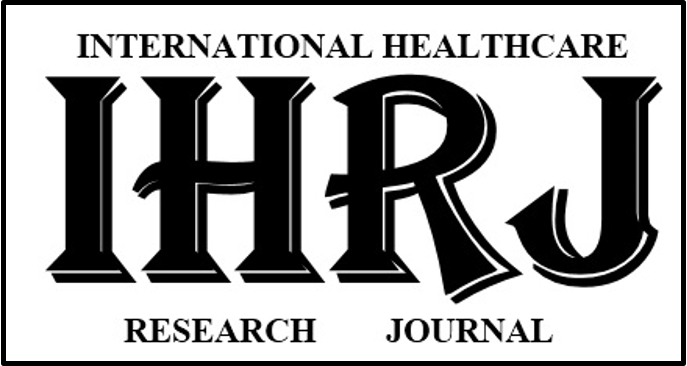Pleomorphic Adenoma of the Parotid Gland: A Case Report
Abstract
Salivary organ tumors are uncommon, including under 3 % of all neoplasia of head and neck district. Pleomorphic adenoma is the most well-known salivary organ tumor, representing 60-80% of amiable tumors of salivary organs. Generally they are found as singular one-sided, firm and portable, effortless, moderate developing mass. The board includes careful resection by shallow or absolute parotidectomy.
Downloads
References
Eveson JW, Cawson RA. Salivary gland tumours. A review of 2410 cases with particular reference to histological types, site, age and sex distribution. J Pathol. 1985;146:51-8.
Alphs HH, Eisele DW, Westra WH. The role of fine needle aspiration in the evaluation of parotid masses.Curr Opin Otolaryngol Head Neck Surg. 2006;14(2):62-6.
Atabo A, Bradley PJ. Management principles of head and neck cancers during pregnancy: a review and case series. Oral Oncol. 2008, 44(3):236-41.
Seifert G. Oralpathologie I. Pathologie der Speicheldrüsen. Springer Verlag Berlin 1996.
Honda T, Yamamoto Y, Isago T, et al. Giant pleomorphic adenoma of the parotid gland with malignant transformation. Ann Plast Surg. 2005;55:524–7.
Schultz-Coulon HJ. Pleomorphic giant adenomas of the parotid gland. Laryngorhinootologie 1989;68(8):445-9. https://doi.org/10.1055/s-2007-998373
Nasser SM, Faquin WC, Dayal Y. Expression of androgen, estrogen, and progesterone receptors in salivary gland tumors. Frequent expression of androgen receptor in a subset of malignant salivary gland tumors. Am J Clin Pathol. 2003;119(6):801-6.
Larbcharoensub N, Cert PK, Tungkeeratichai J, Prakunhungsit S, Narkwong L, Leopairut J. Expression of hormonal receptor in patients with metastasizing pleomorphic adenoma of the major salivary gland; a clinicopathological report of three cases. J Med Assoc Thai. 2009, 92(9):1250-5.

Copyright (c) 2021 Rajesh Gupta et al.

This work is licensed under a Creative Commons Attribution-NonCommercial 4.0 International License.


